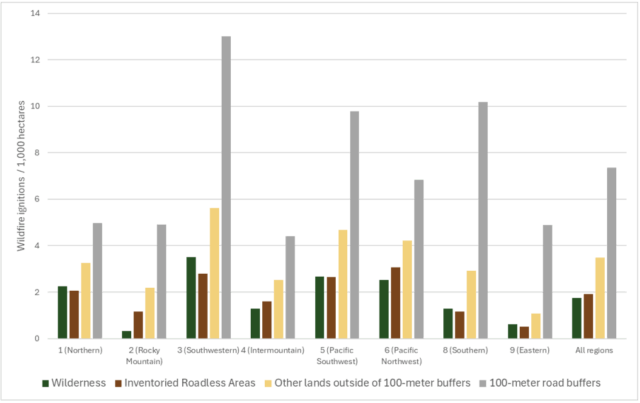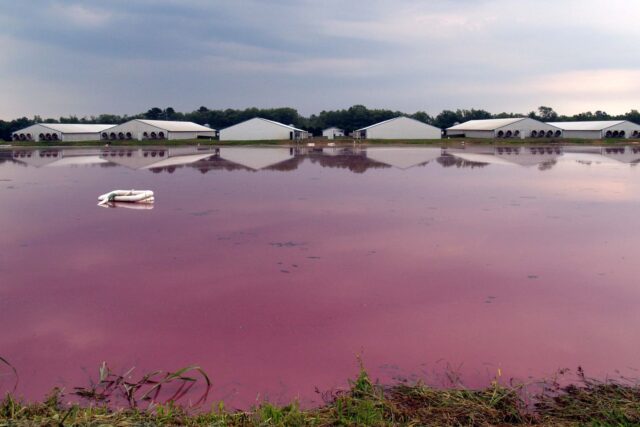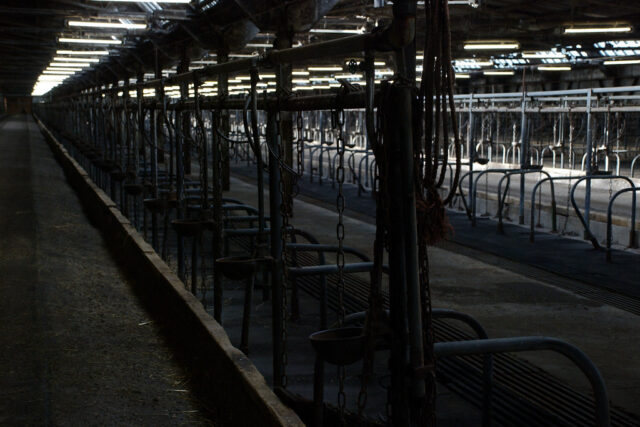Roadless Rule Repeal
Administration Hides Behind Fire Risk Smokescreen to Sell Public Land
Jessica Graham
September 15, 2025
On August 29, 2025, the U.S. Department of Agriculture (“USDA”) posted for public comment a notice of intent to rescind the 2001 Roadless Area Conservation Rule (“Roadless Rule” or “Rule”). The rule is designed to protect forests at the greatest scale in American history by barring commercial logging and road construction across 58.5 million acres of wild forests. For visual learners, the intended protected amount equates to roughly the size of Oregon. Over 20 years since its inception, the Roadless Rule protects nearly 45 million acres of national forests and grasslands, accounting for state-specific carveouts.
USDA Secretary Brooke L. Rollins wants you to believe that this is a necessary change to prevent wildfires (which are more prevalent with climate change, but that’s a discussion for another day). In the USDA Press Release, Secretary Rollins paints the change as the administration’s commitment “to do what’s necessary to protect America’s forests and communities from devastating destruction from fires” by “removing burdensome, outdated, one-size-fits-all regulations that [] put people and livelihoods at risk.” But it is clear that this change has a different objective in mind—driving revenue for logging companies, never mind the environmental costs.
It seems Secretary Rollins is dedicated to keeping with the theme: this is all just a smokescreen.
The History of the Roadless Rule
The inception of the Roadless Rule dates back to 1998, when Forest Service Chief Michael Dombeck announced the development of a transportation policy for the National Forest System. In conjunction with this announcement, Chief Dombeck proposed, and the Forest Service later approved, a building moratorium on 130 national forests that went into effect in 1999. In January 2001, President Clinton issued the Roadless Rule, “ending virtually all logging; roadbuilding; and coal, gas, oil, and other mineral leasing in 58 million acres of the wildest remaining undeveloped national forests lands.”
The Rule did not fly in under the radar. Rather, the Roadless Rule was the result of extensive public engagement and unwavering public support. In creating the Roadless Rule, there were more than 600 public hearings around the nation, attended by more than 20,000 participants. Indeed, it was the most commented-on rule in U.S. history—receiving more than 1.6 million comments. 95% of these comments were written to express support.
The support, of course, was not unchallenged: mere days after its passage, timber and energy interests tried to stop the law from going into effect. The Bush administration also attempted to delay the rule’s implementation and later proposed a change to allow states to opt out (hence the decrease in protected acreage).
“The primary focus of the agency’s forest management efforts is selling public trees to private logging companies, which generates about $150 million each year.”
The first Trump administration also picked up the axe. In 2019, the US Forest Service announced plans to repeal Roadless Rule protections for a subset of protected wilderness—in Alaska’s Tongass National Forest. Pew conducted a survey to gauge whether the Roadless Rule’s overwhelming support had changed in its 20-year history—and whether support was bipartisan amongst Americans (independent of lobbying and corporate interest). Perhaps unsurprisingly, it found that the Roadless Rule was, and remains, wildly popular with all Americans.
Indeed, the Rule retains bipartisan, geography-blind support. Overall, 75% of Pew respondents supported the Rule, and only 16% opposed it. Importantly, this statistic does not seem confined to specific voters or states. Those in rural areas were just as likely to support the policy as those in non-rural areas (77% vs. 75%, respectively), and Democrats and Republicans alike supported the rule (87% vs. 65%, respectively).
Despite broad, bi-partisan support for the Roadless Rule, the current administration has indicated its intent to rescind the Rule and open protected forests for logging. Though the USDA has opened the change to public comment, the period is short—only 21 days long, as compared to the more common 60-day window. And while the agency will be conducting an environmental impact review, Secretary Rollins has repeatedly asserted that the USDA is going to repeal the Rule.









